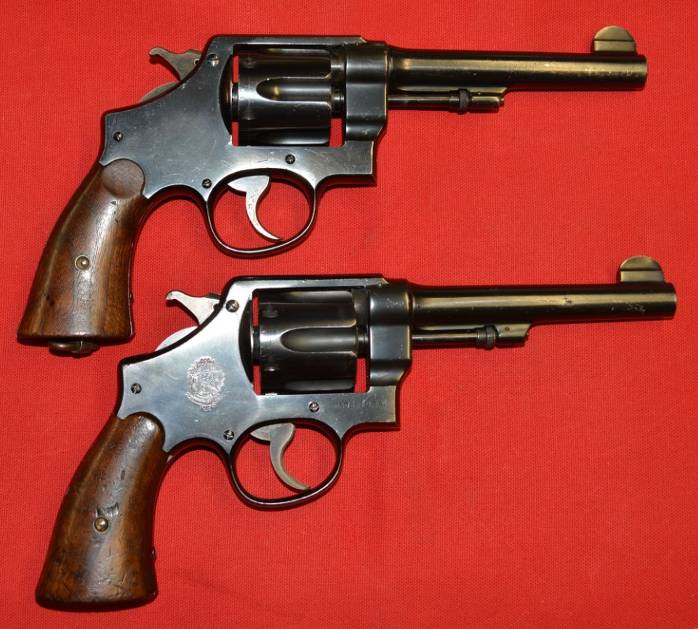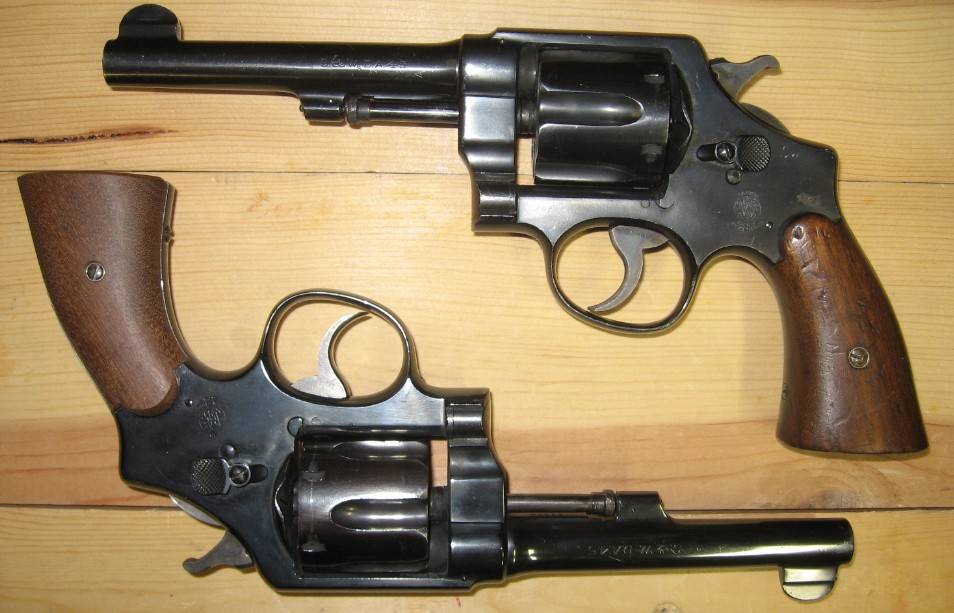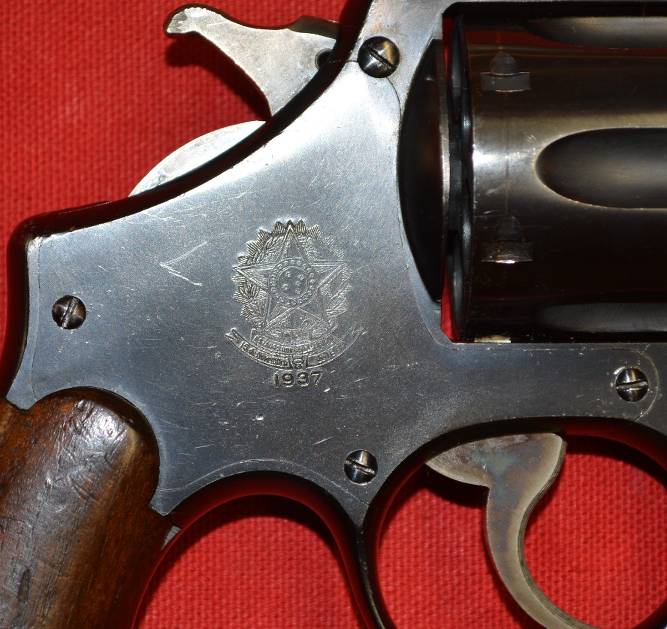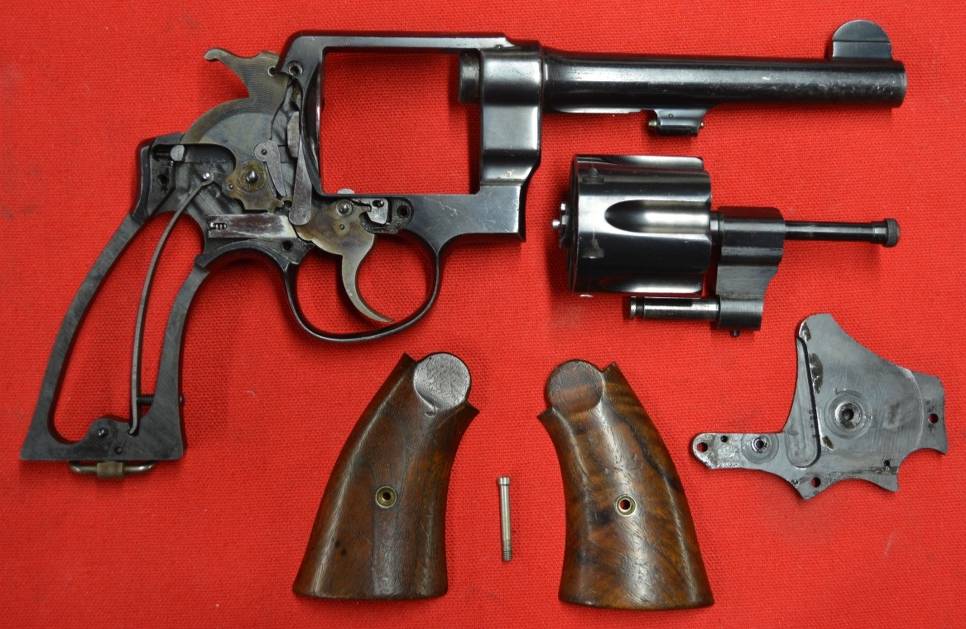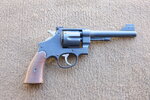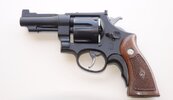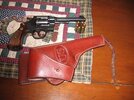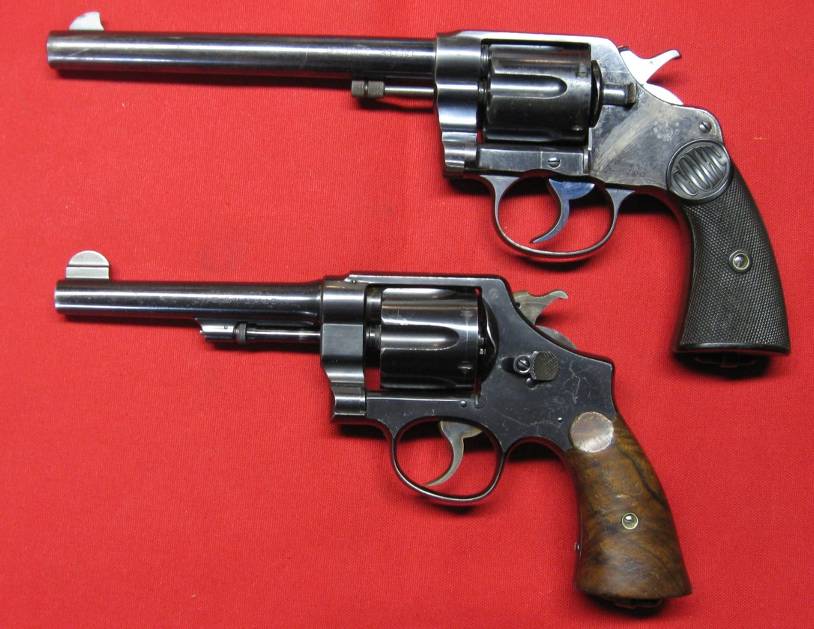A friend believed he owed me for a favor and gave me a 1937 Brazilian S&W that some previous owner had tried to turn into a target gun some years in the bast.
View attachment 1189546
The front sight was enough to put me off in the first place but when I took it to the range not only was the trigger mediocre, the gun just didn't shoot well. I later found out the barrel was actually loose in the frame when I took it to a gunsmith friend to see if he could turn it into something useful.
After months of work (he is retired from the gun smithing business) he presented me with this.
View attachment 1189548
It sports a 3-1/2" barrel, turned tightly into the frame with a hand carved/filed ramp to hold the dovetail front sight. And he made a solid steel fixed rear sight to replace the S&W sight they had used to make it a target gun. We made several trips to the range where I would shoot my load of choice and he would file on the front sight, then we'd try again. Eventually we got it to shoot to point of aim at 15 yards, about my practical limit at 75 years of age.
He also did a lot of hidden work on the mess that had been the hammer, sear, trigger engagement including re-contouring the curve of the trigger. It makes DA shooting easier for my aging arthritic hands and fingers.
I am delighted with the end result as it shoots better than I can. If I were younger and stronger I'd start seriously practicing and carrying this old War Horse. It's that much fun to shoot.
Dave


